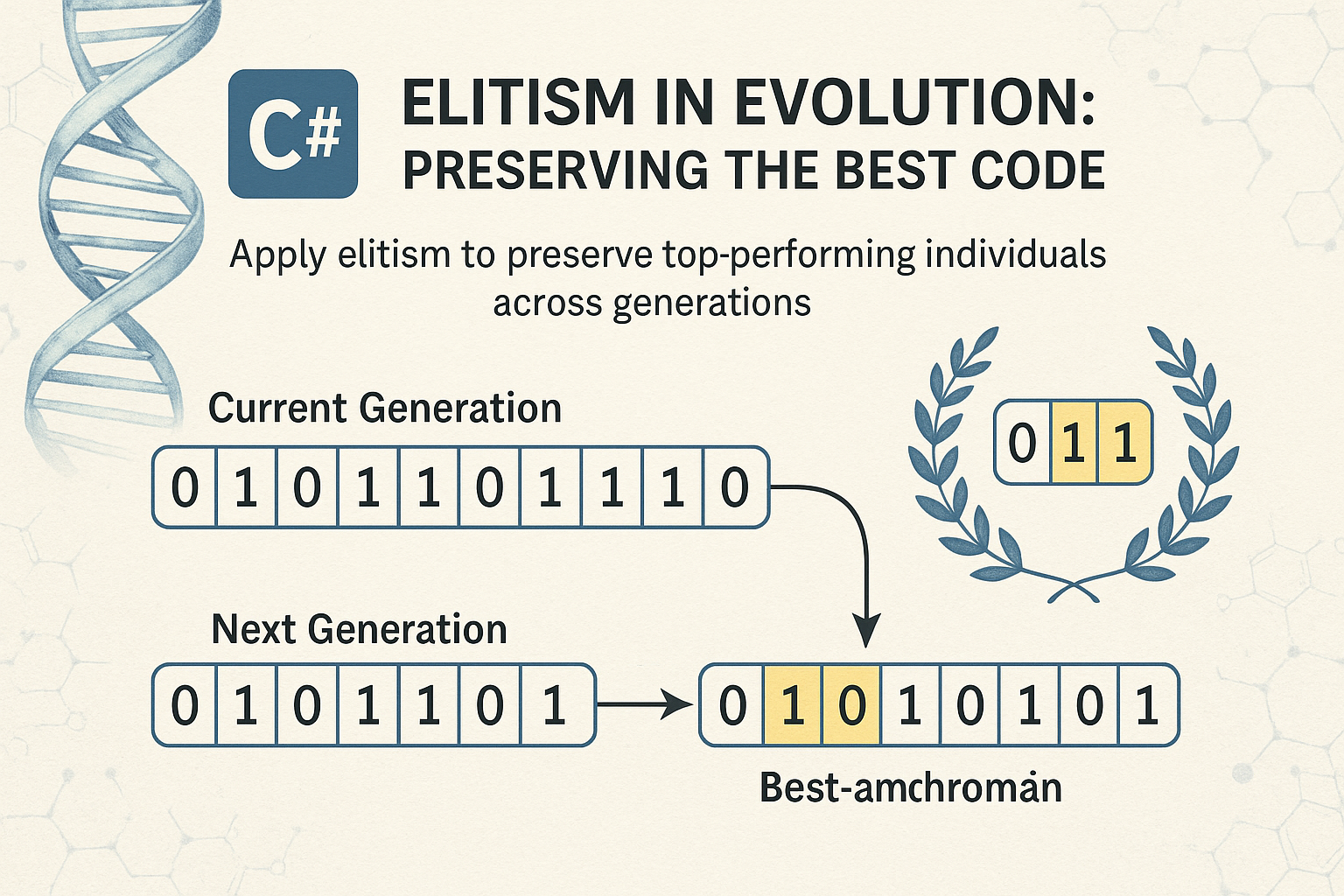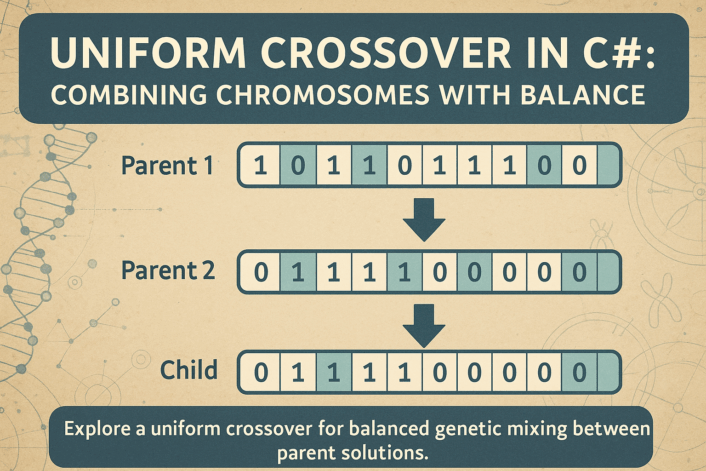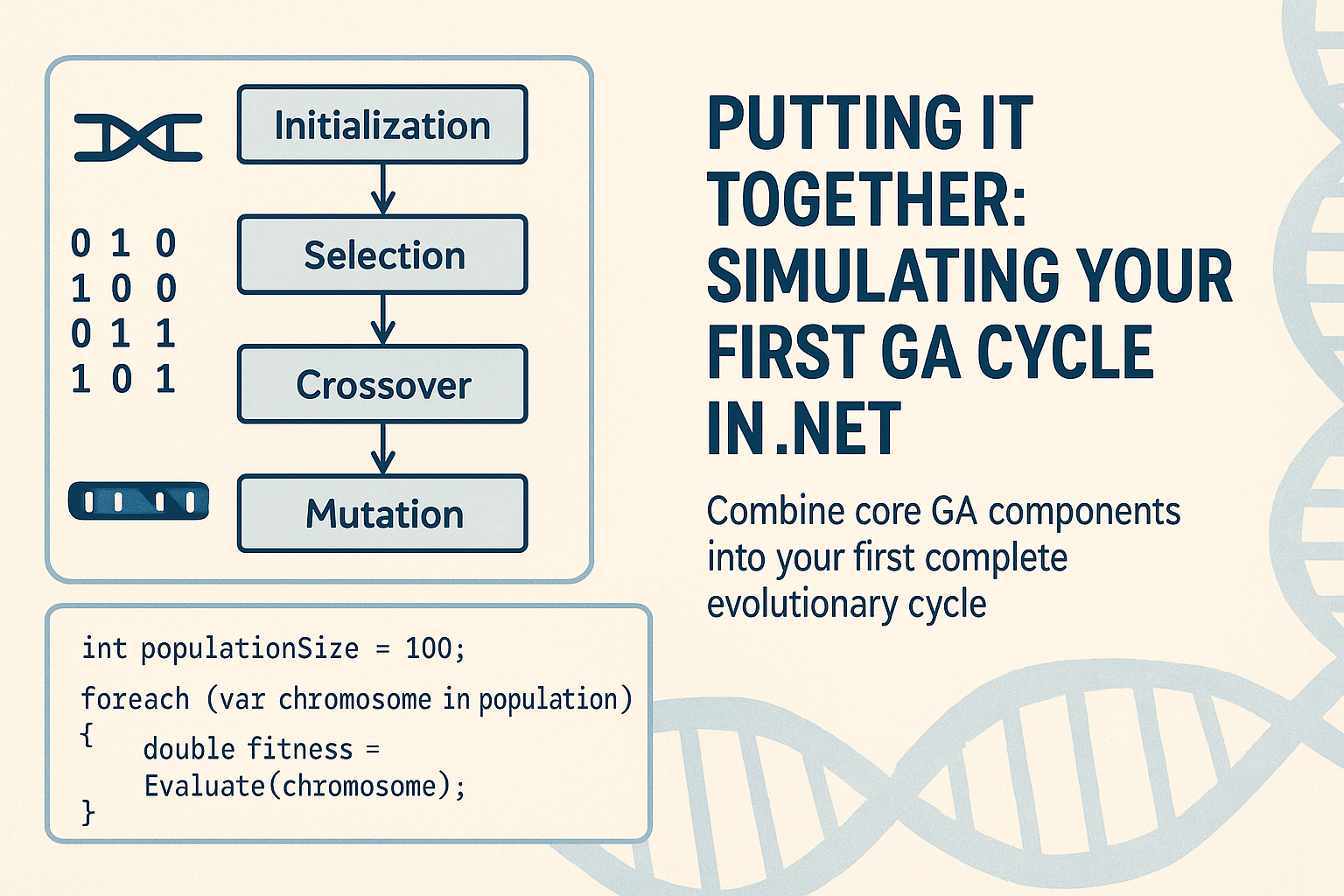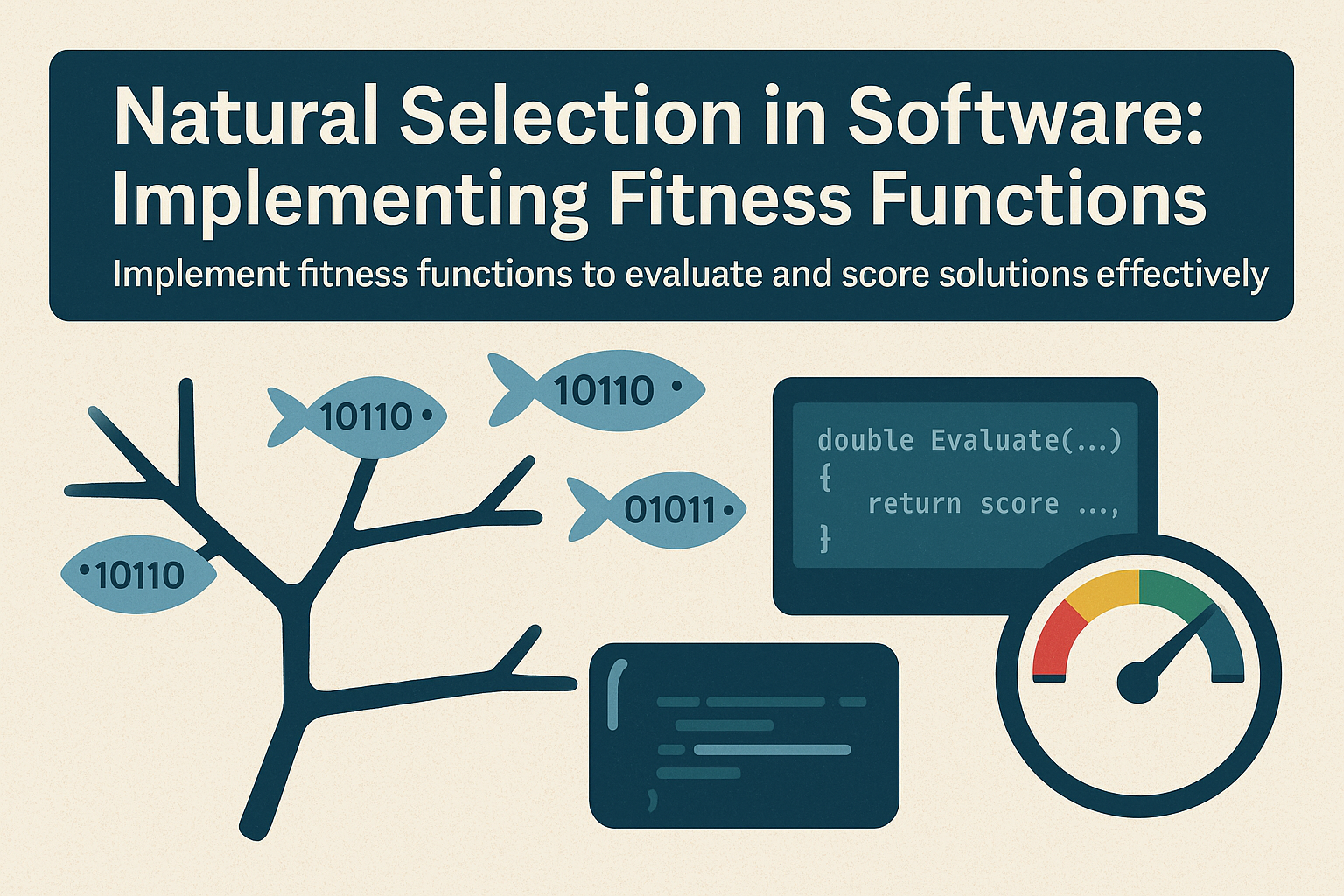Day 14: Evolving Text: Solving the “Hello World” Puzzle with a C# Genetic Algorithm
Now that you’ve built the complete set of genetic algorithm components, chromosomes, fitness functions, mutation, crossover, selection, and a configurable loop, it’s time to apply everything in a hands-on project. In today’s post, we’ll use a genetic algorithm to evolve a string toward a target phrase: “HELLO WORLD”.
This classic exercise helps demonstrate how genetic algorithms work in a tangible, visual way. You’ll see the population of strings gradually improve, letter by letter, until they match the target. It’s a powerful example of emergent behavior through selection and variation.










